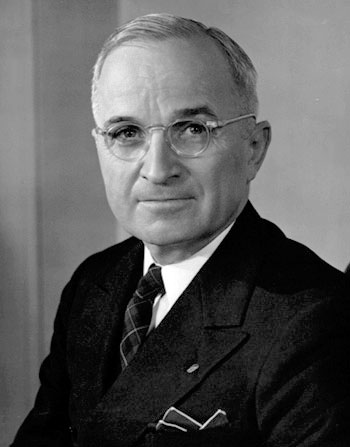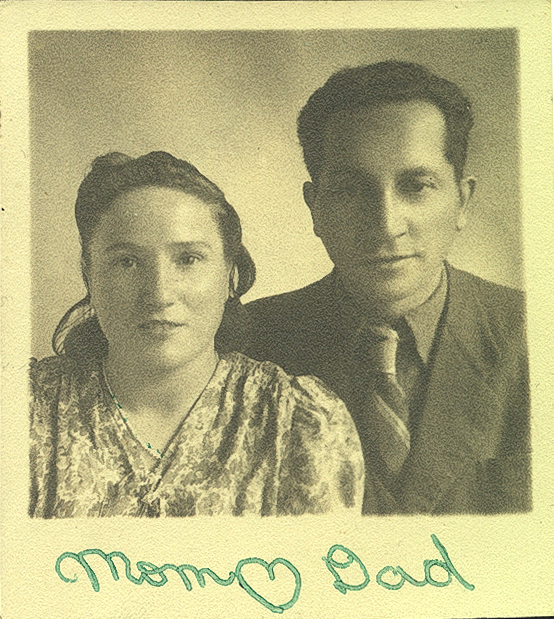Blog Archive
The Truman Directive: December 1945
February 1, 2017
“This could be the mezuzah we put up because we never lived without a mezuzah to protect us. They always put up a mezuzah wherever they lived. Which was brave of my parents, considering that they were persecuted because they were Jewish.” So remarked Bella Epstein Seligsohn, standing at the doorway of Apartment 7 of 103 Orchard, her childhood home, fingering the painted-over casing containing the traditional parchment that Jews affix to their doorways. Though the family moved out over a half century ago, Bella returned to help the museum create an exhibit focusing on tenement families in the decades after World War II. Currently open for apartment tours, this exhibit is the first in the country to tell the story of Holocaust refugees in America. Her vivid memories have been invaluable in helping us imagine a Lower East Side of the 1950s, home to a significant survivor population.
What is the Truman Directive?
Bella’s birth in 1948 made Kalman and Regina the parents of an American, but their American story really began in December 1945, when President Harry S. Truman issued a directive to prioritize the processing of displaced persons. “This is the opportunity,” Truman wrote, “for America to set an example for the rest of the world in cooperation toward alleviating human misery.” The country’s pre-existing immigration quotas limited the total number of refugees Truman could admit; so too did public opinion, which opposed altering the quotas. That month, a Gallup Poll showed that 95% of Americans surveyed did not want to change the immigration laws; moreover when asked which countries should be favored as sources for immigration, respondents chose Scandinavian countries. Fearing a return of the Depression economy after the booming wartime economy, Americans weren’t keen on the prospect of immigrants taking jobs away from returning soldiers.
A New Beginning Under the Truman Directive
This domestic context clearly made it difficult for Truman to do more than expedite the granting of visas, and he repeatedly made assurances that he would not exceed the quotas. Yet, he fought against the imposition of stricter quotas, and emphasized broader humanitarian ideas: “I am informed that there are various measures now pending before the Congress which would either prohibit or severely reduce further immigration. I hope that such legislation will not be passed. This period of unspeakable human distress is not the time for us to close or to narrow our gates.” Truman’s directive ushered in 23,000 refugees, among them Kalman and Regina Epstein.
In April 1947, the newly married Kalman and Regina arrived in New York, met Kalman’s uncle Jacob and his wife Goldie, registered for English classes, and found their first jobs in the garment industry. A report from the Hebrew Immigrant Aid Society [HIAS], the organization that helped tens of thousands of refugees settle, tells us that both were “in good health” and “have made a good adjustment.” Regina and Kalman had survived the horror of the concentration camps. Buoyed by American freedom and a Jewish institutional network, they had a new beginning. Bella worshipped with her father in synagogue, attended a Jewish day school, and also befriended Barbara, an African American girl, who became her checkers partner, and Rosetta di Benedetto, an Italian girl in the building. She listened to Paul Anka’s “Diana” on her record player, and in doing so brought American pop into the Yiddish of Apartment 7.
Truman’s Directive Leads to the Displaced Persons and Refugee Act of 1948
In 1948, Congress followed Truman’s lead, creating the Displaced Person and Refugee Act, paving the way for 400,000 displaced persons to arrive by 1952, and establishing “refugee” as a legal term in American immigration law and practice.
To summarize, Truman’s directive succeeded with regard to the Epstein family and others. The pain and anguish did not vanish, but the opportunity to create new lives on American soil certainly had a part in “alleviating the human misery” they had faced. This environment nurtured Bella, who became a nurse and a mother to three children, who became doctors and nurses in turn, and collectively did their share to heal Americans of all backgrounds.
In Europe, Nazis persecuted the Epsteins for their Judaism. In America, because of the Truman Directive, and more broadly because of the openness and protection of this country, they could safely put up a mezuzah. In boldly accepting the refugees of World War II, Truman made America more American.
– Annie Polland, Senior Vice President for Programs & Education at the Lower East Side Tenement Museum
Update: Since January 2021, Dr. Annie Polland is the current President of the Tenement Museum.

